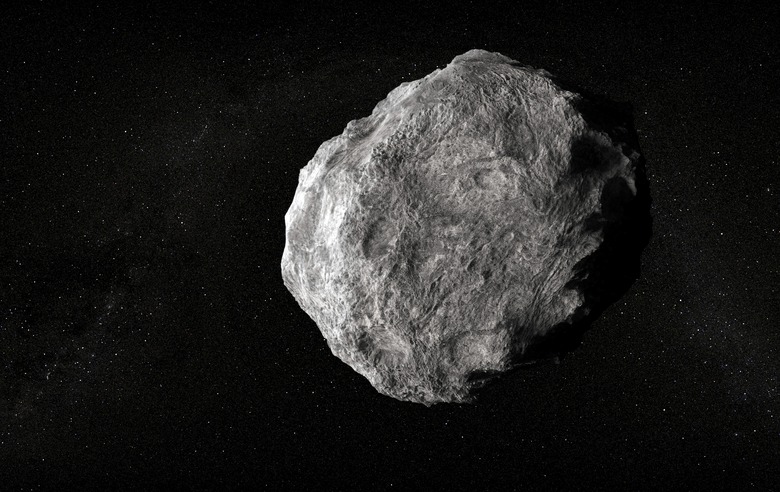The Perks Of Bombing An Asteroid
Earlier this month, a Japanese space mission dropped an explosive on an asteroid.
It wasn't the first time the space probe, Hayabusa2, had taken a shot at the asteroid (called Ryugu, situated relatively near Earth). For a year, the mission had struck Ryugu with probes, taken a piece from it and shot a bullet at it. But on April 4 (or April 5 in Japan), Hayabusa2 took things a step further: They bombed it.
And it was all for science.
Why They Did It
Why They Did It
In short, the mission wanted to create a crater on the asteroid. The team's overall goal is to collect samples from Ryugu and return them to Earth in 2020. In February, the probe shot a bullet-like projectile at the asteroid, which scattered surface materials for collection. However, these materials were exposed to the solar system's weather and therefore only provided a glimpse of Ryugu's surface, without revealing much about its geological history, according to the New York Times.
By bombing and creating a crater on Ryugu, Hayabusa2 achieved access to soil beneath the asteroid's surface, which might provide more insight into its geological past. Moreover, observing how debris moves away from the crater should help scientists gain an understanding of what the asteroid is made of.
How They Did It
How They Did It
The operation began by lowering the probe to about 1,600 feet above Ryugu's surface, then dropping the explosive device from there. The device was a 4.4-pound, explosive copper plate, and took about 40 minutes to impact the surface of the asteroid due to its weak gravitational pull, according to Live Science.
Osamu Mori, an engineer from JAXA's Institute of Space and Astronautical Science, was involved with the operation and participated in a live broadcast about it.
"We conducted a lot of experiments, but when we did this for real, I was still very nervous," Mori said in the broadcast, as reported by Nature.com.
Hayabusa2 announced on Twitter that its operation, the world's first collision experiment with an asteroid, was successful. The mission's team of scientists are now working to study how the crater formed on Ryugu and how the ejector dispersed.
Ryugu's Scientific Purpose
Ryugu's Scientific Purpose
The New York Times reported that Ryugu is a C-type, or carbonaceous, asteroid, as are about 75% of asteroids in the solar system. These asteroids are full of organic molecules, potentially including amino acids – meaning asteroids may have planted the seeds for life on Earth. Studying these materials, and specifically materials beneath the surface of the asteroid, may reveal facts about the early solar system, according to Nature.com.
This isn't it for Ryugu – Hayabusa2 will deploy one more tool (a small, hopping rover) to the asteroid late this summer. The probe will then return to Earth with its space rock souvenirs, which should touch down via parachute in December 2020.
Cite This Article
MLA
Swanston, Brenna. "The Perks Of Bombing An Asteroid" sciencing.com, https://www.sciencing.com/the-perks-of-bombing-an-asteroid-13718402/. 26 April 2019.
APA
Swanston, Brenna. (2019, April 26). The Perks Of Bombing An Asteroid. sciencing.com. Retrieved from https://www.sciencing.com/the-perks-of-bombing-an-asteroid-13718402/
Chicago
Swanston, Brenna. The Perks Of Bombing An Asteroid last modified August 30, 2022. https://www.sciencing.com/the-perks-of-bombing-an-asteroid-13718402/
